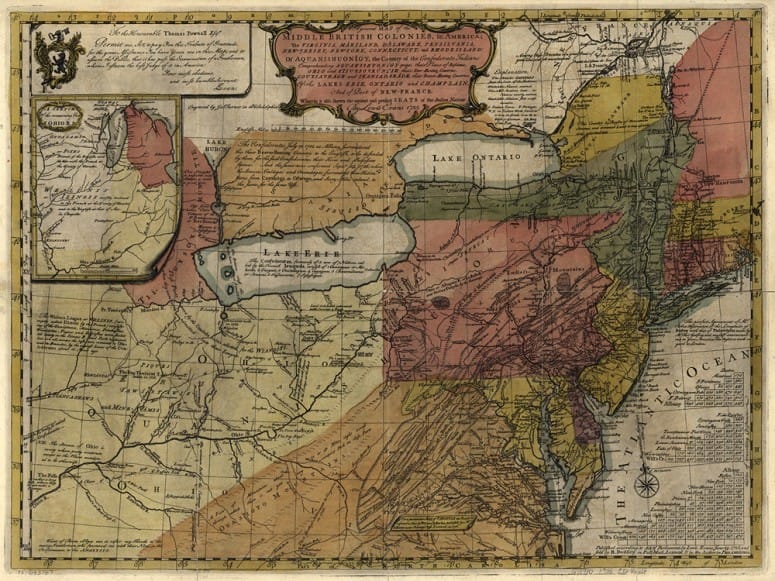- Post Contents -
BRITISH AND FRENCH RIVALRY
British and French rivalry was due to suspicion and fear, causing hostilities and numerous wars between them, and their American colonies were no different. In the Treaty of Whitehall (1686), the English King James II and the French King Louis XIV pledged to refrain from hostile behavior in America even if they found themselves at war between each other in Europe. This treaty was meant to settle conflicts between Britain and France in America – such as fishing rights, fur and Indian trade, and illegal smuggling – but this attempt to keep America uninvolved in European wars was quickly proved to be a dead end.
The French and Indian War – as known by the colonists – began inside America’s wilderness over border disputes. The most serious of which was the ownership of the Ohio Valley. The French wanted possession of it to control its direct route between Canada and Louisiana and they built a chain of fortifications to secure their claim to it. However, Pennsylvania fur traders and Virginia land speculators, the Ohio Company, also looked across the Allegheny Mountains to the lands beyond as profitable claims for their operations. The British government quickly claimed territorial rights and instructed their colonial governors to oppose the French from trespassing. Thus, the British Governor of Virginia acted upon the instructions by sending 21-year old George Washington to meet with the French commanders of these forts – between Lake Erie and the Allegheny River – and deliver a British message of protest against French claims in the Ohio Valley.
PRELUDE TO WAR – OHIO VALLEY POSSESSION
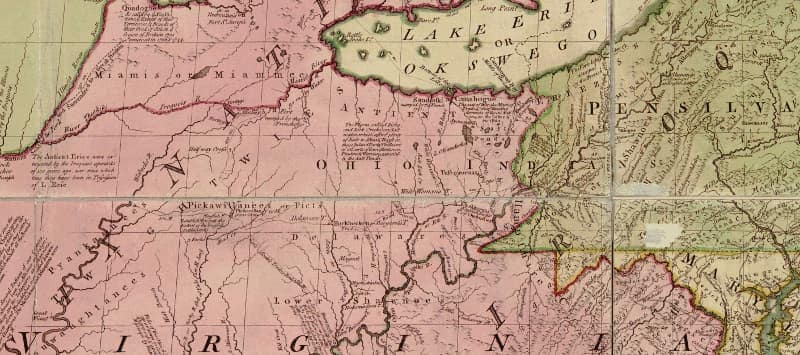
American colonies of the British and French
Entered into warfare over land each did clench,
Proclaiming entitlement as occupied dominance.
As there were no clear division lines
To ownership of land, lack of agreeable confines
Pushed rivalry to dangerous intolerance.
Prelude to war was the movement west–
Traders in the Ohio Valley spread their interest
Toward outposts and better Indian friendship.
Virginia’s Ohio Company shared the same intention
With a kingly land grant to Ohio’s upper extension,
Sending surveyor Gist exploring land for ownership.
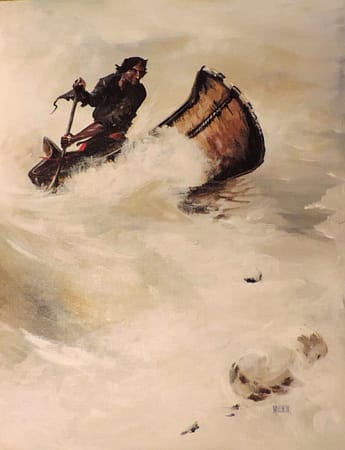
Christopher Gist at the Falls of the Ohio 1751
by Paul R. Misencik
talesfromamericaspast.com
After his birth in 1706, Gist’s family left Baltimore and moved the family to North Carolina and resettled near the Yadkin River. Though Gist grew up with little formal education, he became a skilled explorer, frontiersman, and surveyor. The Ohio Company later hired Gist to map the Ohio area from the then Shannopin’s Town to the Great Miami River. He later accompanied George Washington as leader and guide on his expedition to confront the French and deliver Governor Dinwiddie’s message.
BRITISH LAND GRANT THREATENED BY FRENCH
Control of Ohio’s valley rivers meant trade regulation
And distribution along waterways with no restriction–
An important route to the Mississippi and westward.
Ohio Company shareholders had an economic stake,
But the forays the French did partake,
Threatened Virginian’s British land award.
Some of the shareholders were Virginia planters
Prospecting trade and land as venturers,
Till the French blocked the Ohio territory.
Company prospects were halted and left undone–
Shareholders affected were three Washingtons,
Mason, Mercer, Lee, Dinwiddie, and Hanbury.
Now the French settlers in the Ohio Valley region
Resented English traders, and their reason
For more protection was to build domination.
They raised forts in Pennsylvania’s backcountry,
A bold advance along its southern boundary–
A most defiant turn to exact provocation.
Great Britain rejected their land claim right away,
As monarchy land grants outweigh
Any such insolent French declaration.
Resistance grew, and the French did not withdraw
Their key river position for another king’s law–
Their fate to the west hinged on this possession.
BRITISH MAJOR GEORGE WASHINGTON
31st October / 1 November 1753
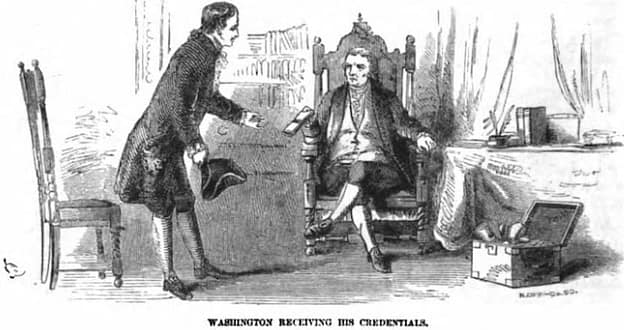
The Life of Washington – Univ. of Wisconsin
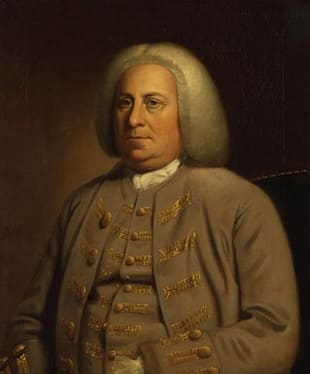
1693-1770
National Portrait Gallery | mountvernon.org

1732-1799
French and Indian War Days
By Charles Volkmar -1874
mountvernon.org
Virginia’s Governor, Honorable Robert Dinwiddie
Commissioned Major George Washington on a journey
To deliver to French forces on Ohio, a British Letter of warning.
Washington left Williamsburgh that day to hire an interpreter
At Fredericksburg and essentials from an Alexandria supplier,
Then to Winchester for baggage and horses for traveling.
Washington wore his brown hair in a queue,
His British hat pulled down slightly askew
Against an autumn turned gray and wintry.
He was uniformed and commanding upon his horse,
Muscular and long-boned, quite an arresting force
Of proportion, composure, and dignity.
14-22 November 1753
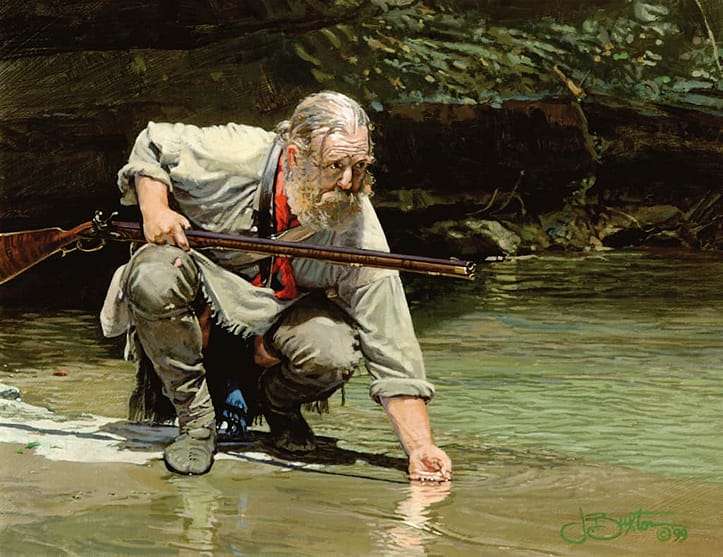
The expedition needed more skills and techniques,
So they hired Indian traders and servants at Wills Creek—
Including Mr. Gist as their leader and guide.
Endless rain and deep snow kept them from reaching
Indian trader, Mr. Frazier, at the Turtle Creek opening
To Monongahela River till the 22nd; it was a rough ride.
They saw the river’s overflow and knew it impassable
Without swimming the horses, Washington was agreeable
To a canoe from Frazier and sending supplies downriver.
Currin and Steward took the canoe with supplies,
As Washington and the others rode horses to reorganize
At the Ohio Forks, where he needed a new plan to consider.
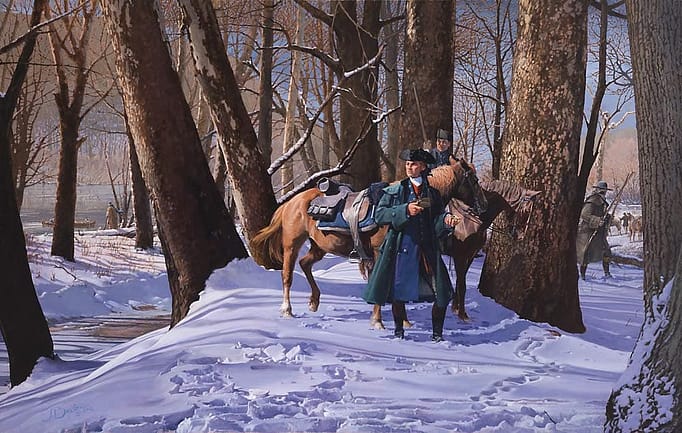
At a high point above the river fork in the valley,
Washington and Gist surveyed the area to tally
Britain’s best advantage and defense.
A fort at the fork on two rivers, the Ohio-Allegheny
And the deep Monongahela, they agreed would oversee
All waters around the fork’s confluence.
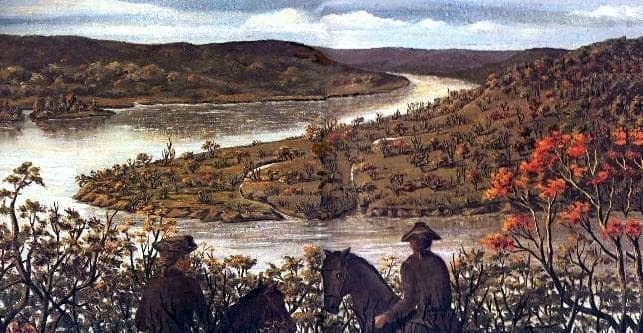
FRENCH AND INDIAN WAR | Part 1
Continued…
Updated 2020
References
– Mount Vernon Ladies Association. 2015. The Journal of Major George Washington.
http://www.mountvernon.org/educational-resources/primary-sources-2/article/the-journal-of-major-george-washington/
– MountVernon.Org. Ten Facts About George Washington and the French & Indian War.
http://www.mountvernon.org/george-washington/french-indian-war/ten-facts-about-george-washington-and-the-french-indian-war/
http://www.mountvernon.org/george-washington/french-indian-war/washington-and-the-french-indian-war/
– Washington, George and Royster, Paul , editor, “The Journal of Major George Washington (1754)” (1754). Electronic Texts in American
Studies. 33. http://digitalcommons.unl.edu/etas/33
– Colligan, K., A. Manella, and M. Gorzalski. 2009. Ohio Company Papers – Ohio Company (1747-1779). University of Pittsburgh -Library System, ULS Archives Service Center.
http://digital.library.pitt.edu/cgi-bin/f/findaid/findaid-idx?c=ascead&cc=ascead&rgn=main&view=text&didno=US-PPiU-dar192502
– R.Blanchard. 1880. The Discovery and Conquests of The Northwest. Chicago: Cushing, Thomas & Company, Publishers. -Library-University of California Davis. Pp.12.
– History of the Brookline Community (1754-2014)
http://www.brooklineconnection.com/history/Facts/History250.html
